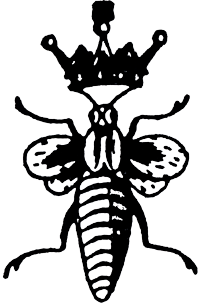Social Saturday | July 25, 2015
MET-HIM-PIKE-HOSES
The Greer Fragments and the Literature of Amphibious Ecstasy in the Americas, 1948-1962
An evening with ESTAR(SER) at Mildred’s Lane
Event Begins at 5 p.m.
Stephen Greer’s “short-lived,” Kansas-based Green Review (notionally 1959-1962, though no actual issues appear ever to have been published) would seem to belong definitively and eternally to the capacious crypt of unborn literary quarterlies. And yet, a hitherto unknown body of correspondence and manuscripts (recently surfaced in the “W-Cache”) sheds new light on Greer’s thwarted ambitions. This in itself might interest only the specialist, but these same materials also reveal an elaborate, and as yet not well understood, effort by Greer to bring to print a series of mysterious works of short fiction — all of which appear to deal in one way or another with metempsychotic episodes of great intensity and inscrutable allegorical import. Do these fragments, properly arranged, trace Pan-American migrations of the Order of the Third Bird at mid-century? It would appear they do.
At Mildred’s Lane on Saturday, July 25th, members of the research consortium ESTAR(SER) will present a works-in-progress report on the Greer Fragments, and sift the compelling and contradictory sources that have emerged from this archive. In the course of the evening, attendees will have an opportunity to experiment with the techniques of “amphibious inquiry” that seem to be at issue in these puzzling materials.
About ESTAR(SER): The Esthetical Society for Transcendental and Applied Realization (now incorporating the Society of Esthetic Realizers) is an established body of private, independent scholars who work collectively to recover, scrutinize, and (where relevant) draw attention to the historicity of the Order of the Third Bird.
Tour – 4:00 p.m.
Cocktails with the Fellows BYOB – 6:00 p.m.
Lecture Presentation – 6:30 p.m.
Dinner BYOB – 8:00 p.m.
Attention Lab: Order of the Third Bird
Sal Randolph
D. Graham Burnett
Jeff Dolven
Leonard Nalencz
Audra Wolowiec
Jac Mullen
David Richardson
Jorian Polis Schutz
Attention Lab: Order of the Third Bird Fellows
Aneesa Shami | Independent/Kansas City Art Institute
Anne Lesley Selcer | Independent/California
Anna Riley | RISD/Rhode Island
Corissa Duffey | Georgia University
Rachel Weidinger | Independent/California
Shiloh Ashley | Arizona State University
Sophie Goodchild | Kingston University/UK
Max Tolleson | Independent/New York
2015 Mildred Fellows
Chris Beer | Supervisor of Entanglement
Mariana Gutierrez | Ministry of Comfort
Isobel Rose Lister | Officer Of Complex(ity)
Cameron Klavsen | Resident Artist in Complex(ity)
Jaquel Theis | Land Steward 1
Juliet Dunn | Land Steward 2
Elizabeth Hurst | Digestion Choreographer
D. Graham Burnett functions as a lose New-York-based collective. Members have included Yara Flores, Eigil zu Tage-Ravn, Frumento Combusti, Dusty Keelson-Maar, Molly Gottstauk, and Sanelma Nicht. Participants have taught at Princeton, Yale, and Columbia Universities, and authored several books, including Descartes and the Hyperbolic Quest (2005), and The Sounding of the Whale (2012). Others have recently shown work in the “Island” exhibition at the Dairy Art Center (London) and the Emily Harvey Foundation (New York). More at dgrahamburnett.net
Jeff Dolven teaches Renaissance literature, poetry, and poetics at Princeton University. He is the author of Scenes of Instruction (U of Chicago Press) and a book of poems, Speculative Music (Sarabande), and he is an editor at large at Cabinet magazine.
Jac Mullen is the executive editor and co-founder of the American Reader, a monthly journal of literature and criticism.
Leonard Nalencz has worked as an organizer for an international trade union, a professor of Classical and Romance Languages and Literature, a Liguria-based Cicerone, and as a short order cook (in Ocean City, New Jersey). His current projects include a work of literary criticism focused on figures of resuscitated youths in Early Modern epic romance poetry and the development of new protocols of sustained attention to digital images.
Sal Randolph is an artist living in Brooklyn. Her Money Actions have been featured in the 2011 Biennial of Graphic Arts in Ljubljana, Slovenia, the Live Biennial, and in the fall issue of Cabinet Magazine. Other projects have been exhibited at the Göttingen Kunstverein, Röda Sten, and Manifesta 4. She has recently been doing research and teaching on the topic of attention as a visiting fellow at Princeton University and has shown new work at Raygun Projects in Toowoomba, Australia and Moore College of Art and Design in Philadelphia. More information: salrandolph.com
Audra Wolowiec is an interdisciplinary artist based in Brooklyn, NY. Through sculpture, sound, text and performance, her work mines themes of communication to create experiences that merge the sensory with the conceptual. Her work has been shown at Art in General, Magnan-Metz, REVERSE, Norte Maar, and the Center for Performance Research. She currently teaches at Parsons, The New School for Design and SUNY Purchase. www.audrawolowiec.com
David Richardson is a freelance writer, editor, and teacher living in Brooklyn. He has worked for Cabinetmagazine, MoMA, Diller Scofidio + Renfro, and Lapham's Quarterly. His work has been published in BOMB magazine, and he has a forthcoming article in the Three Percent Review.
Jorian Polis Schutz is a writer, publisher, farm manager, and student of yoga and Torah. Jorian spent much of the past few years growing his roots in Jerusalem, and recently "landed" in central Virginia, where he hopes to regenerate his inner topsoil. Jorian published his first book, Varitan's Illustrated Greek Myths, in 2011. This year he has completed a cycle of essays about Yosef haTzaddik (Joseph), produced the Experimental Kollel intensive study program at the Iyyun Center, and will publish the Misaviv Hebrew Circle Calendar, with 14 original works of art and a new way of "telling" time. Jorian is particularly interested in the fusion of biological and mystical perspectives, in re-harnessing the critical tradition for regenerative practice, and in the use of illustration and animation to illuminate sacred teachings.

